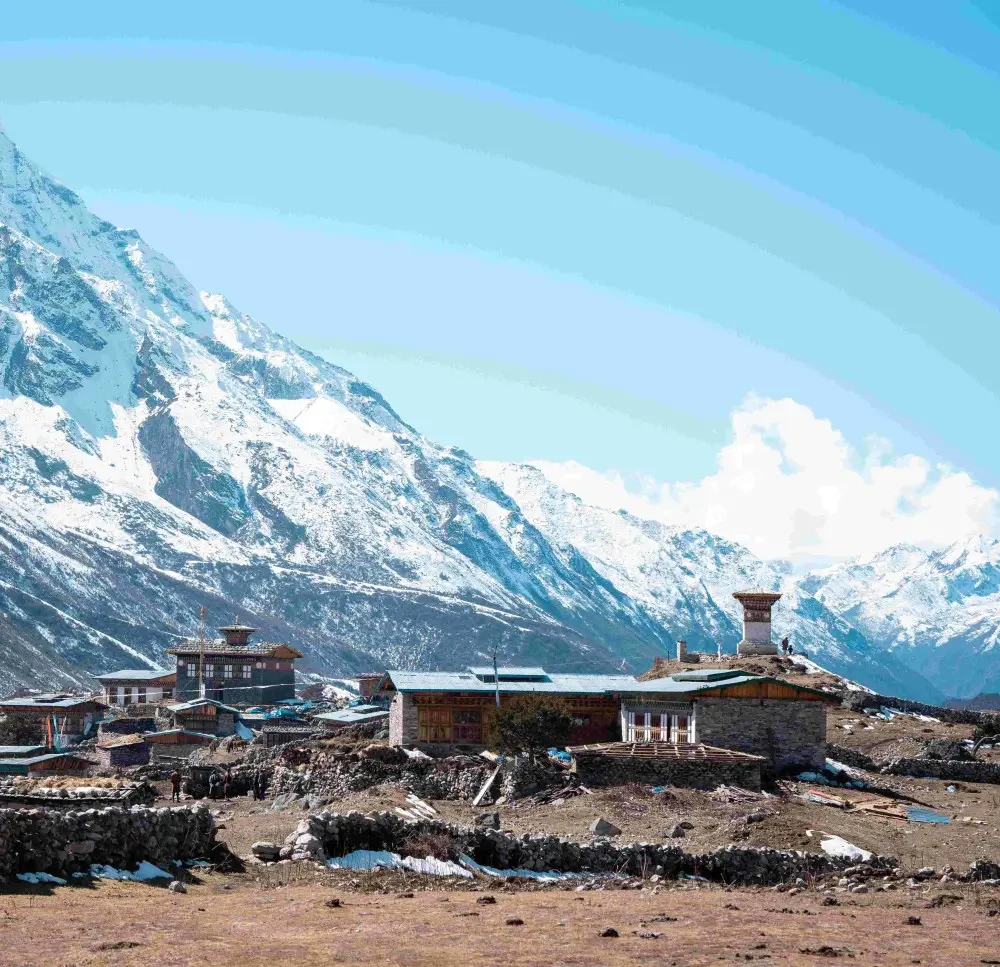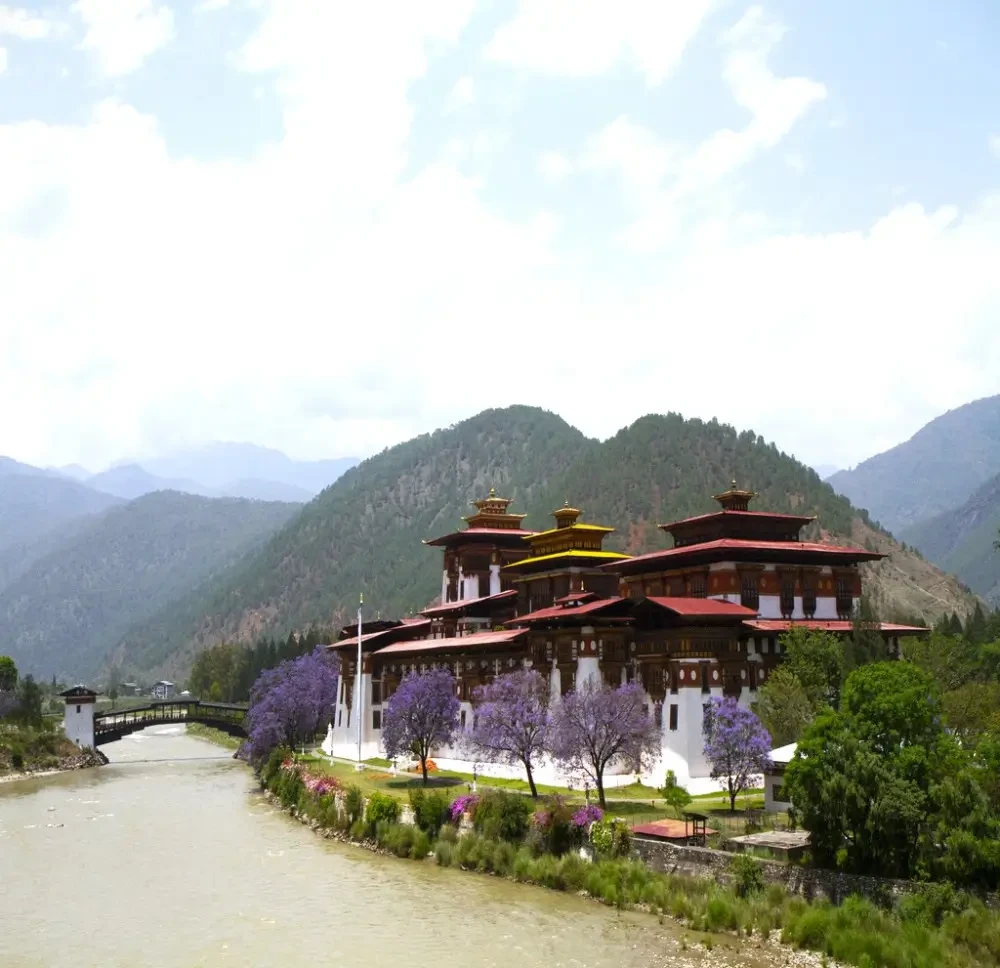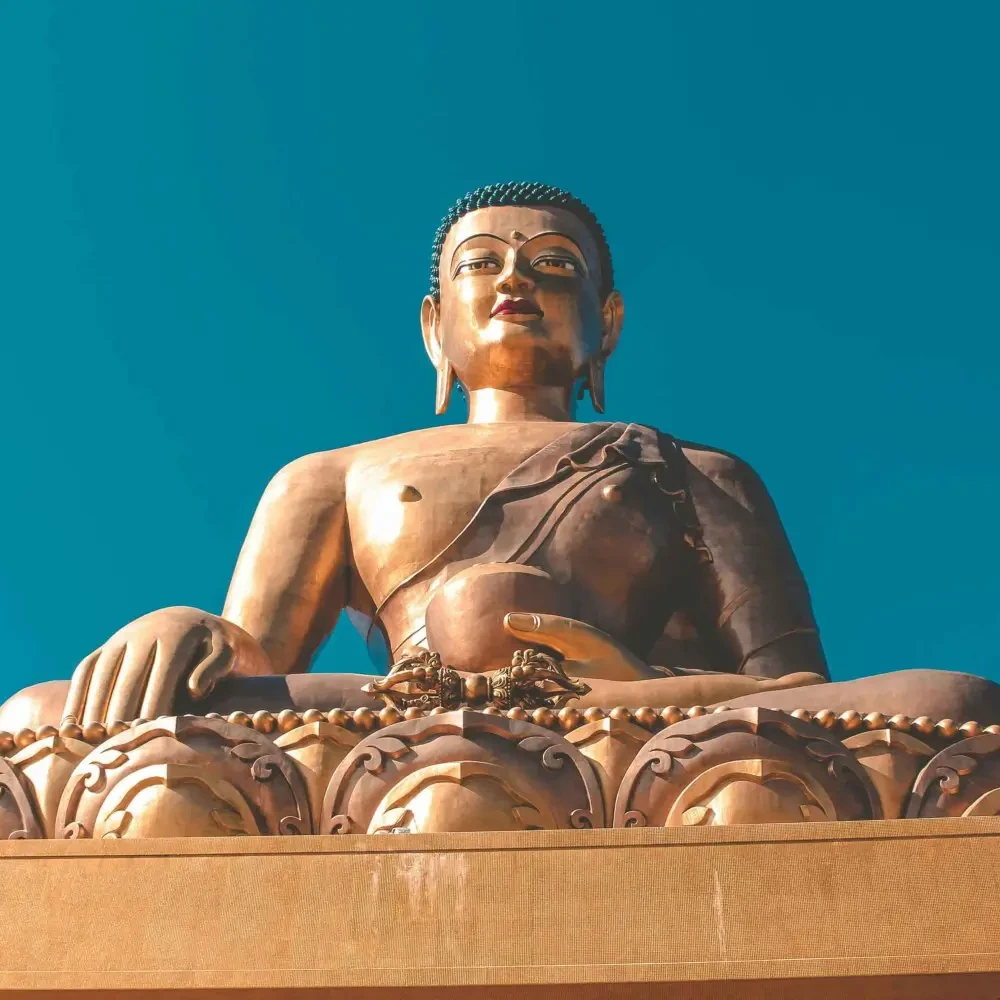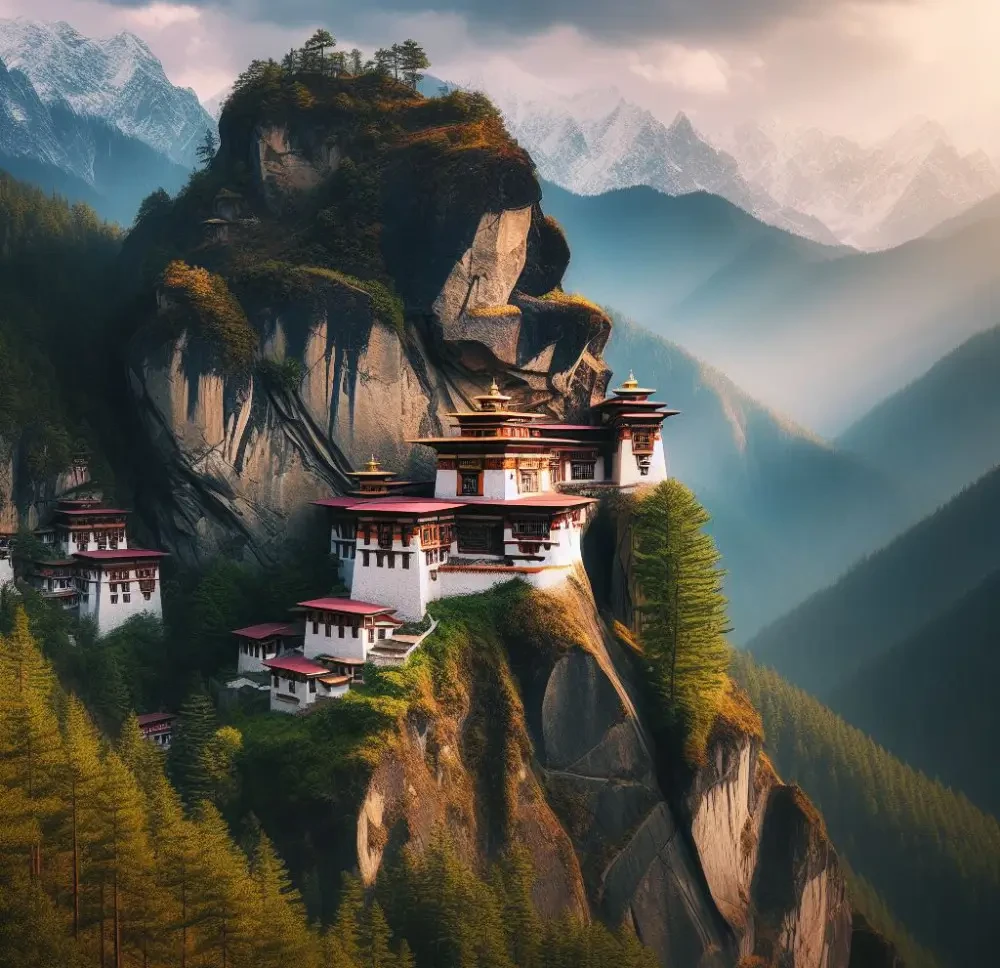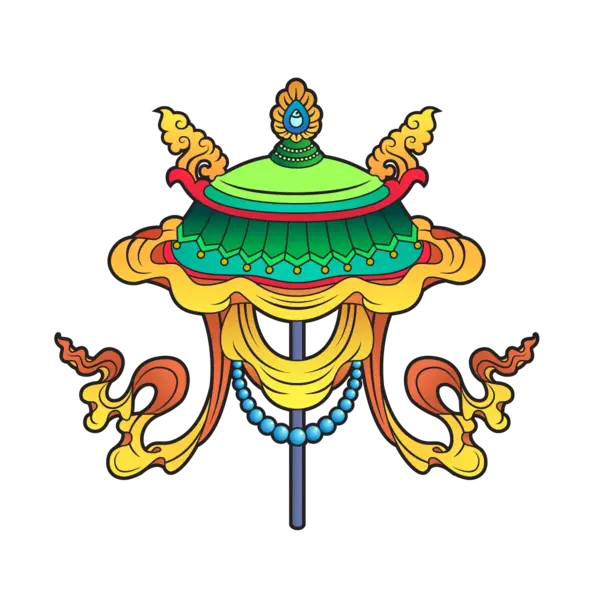Do you know how many countries around the world proudly dangle phalluses as necklaces, or key hangers? A few? Or perhaps none? Apparently, in some parts of the world, nothing says “GOOD LUCK” like a well-endowed keychain or a necklace. Well, in Bhutan, one will find plenty of phalluses painted on the walls, designed as necklaces, keychains, and many other decorative items.

In Bhutan, where the fertility Temple reigns supreme, the phallus is more than just a symbol – it’s practically a national unofficial mascot! It’s a whole different level of devotion. The fertility temple, officially known as Chimi Lhakhang, draws visitors from around the globe who come seeking blessings of fertility, protection, and of course, a little humor in their lives. Perched atop a round hillock in the heart of the Punakha Valley near Lobesa, Chimi Lhakhang stands as a beacon of Bhutan's unique fusion of spirituality and folklore, making it a must-visit for those seeking a little magic and mischief in their lives.
The Fascinating History of Chimi Lhakhang
Chimi Lhakhang, also known as the Fertility Temple, was founded in 1499 by Lama Ngawang Chogyal, the 14th abbot of Ralung Monastery in Tibet. This sacred site holds deep spiritual significance, but it's the legendary story of Drukpa Kunley, the "Divine Madman," that truly brings the temple to life.
Drukpa Kunley, who lived from 1455 to 1529, was known for his outrageous behavior and unorthodox spiritual teachings. He blessed the site where Chimi Lhakhang now stands, and according to legend, he subdued a demoness who had transformed into a black dog. Using his “magic thunderbolt of wisdom” (a playful euphemism for his phallus), he trapped the demoness in a rock, which is now close to where a chorten, or stupa, stands today. This event gave the temple its name, “Chimi Lhakhang,” which translates to “The No Dog Temple.” The temple itself is perched atop a hillock shaped like a woman’s breast, further emphasizing its connection to fertility.
Drukpa Kunley’s methods were as unconventional as they were effective. Known for his scandalous behavior, including sexual innuendos and shocking antics, he used these tactics to challenge the rigid religious norms of his time. His goal was to provoke people into discarding their inhibitions and preconceptions, pushing them to focus on the deeper aspects of life. He even earned the nickname “The Saint of 5,000 Women” due to his pleasure-filled lifestyle, which he believed was a path to enlightenment.
In Bhutan, Drukpa Kunley is also credited with the creation of the Takin, the country’s national animal. Legend has it that he combined the head of a goat with the body of a cow, giving birth to this unique creature. The Tango Monastery even proudly displays a Thangka (a religious painting) that Drukpa Kunley famously urinated on, further highlighting his rebellious nature.
The monastery at Chimi Lhakhang houses the original wooden phallus that Drukpa Kunley brought from Tibet. This sacred object, adorned with a silver handle, is used to bless pilgrims, especially women seeking to conceive. As part of the tradition, visitors are gently struck on the head with this 10-inch (25 cm) wooden phallus, a ritual believed to bring fertility, prosperity, and good luck.
Thanks to Drukpa Kunley’s influence, the phallus has become a widely recognized symbol in Bhutan, representing not only fertility and prosperity but also protection from evil. It’s common to see phallic symbols in paintings, souvenirs, necklaces, and keychains throughout the country.
Interestingly, if you visit Chimi Lhakhang, you’ll notice a statue of Drukpa Kunley alongside his dog, Sachi, near the entrance to the temple complex, close to the courtyard and prayer wheels. This raises a curious question: Why is there a statue of a dog at the “No Dog Temple”? It’s just one more layer of mystery and humor in the rich legacy of Bhutan’s beloved Divine Madman.
Statue of Lama Drukpa Kunley and his dog Sachi
Despite its name, Chimi Lhakhang, meaning “The No Dog Temple,” which comes from the legend of subduing a demoness who turned into a black dog, the temple complex actually features a statue of Lama Drukpa Kunley and his dog, Sachi.
This statue represents the blending of opposites, reflecting Lama Kunley’s unique way of teaching through humor and paradox. Instead of simply excluding the “dog,” the statue suggests that negative elements can be transformed into something positive.
Sachi, the dog, symbolizes loyalty, companionship, and spiritual support in Drukpa Kunley’s life. The statue captures the deep bond between the lama and his loyal friend, highlighting the themes of devotion and unwavering assistance.
Interesting Facts About Chimi Lhakhang
1. A Pilgrimage for Fertility Blessing – A Global Attraction
Chimi Lhakhang, affectionately known as the Fertility Temple, is a source of hope for couples longing to have a child. The temple has earned a strong reputation as a place where many couples have successfully conceived after receiving blessings there.
At the heart of this tradition is a wooden phallus, believed to have been brought to Bhutan by Drukpa Kunley himself. Monks use this sacred object to bless couples, with many attributing their pregnancies to its supposed fertility powers. During the visit, special prayers are recited, and the couple is often given a name for their future child, typically starting with “Kinley” or “Chimi,” in honor of the Divine Madman.
2. The Fertility Ritual
Couples seeking physical and spiritual blessings for conception and a successful pregnancy often participate in a series of meaningful rituals at Chimi Lhakhang. Here’s a simpler breakdown:
1. Touching the Phallus: Couples kneel at the altar and reverently touch the phallus, expressing their deep hope and faith in the temple's powerful blessings.
2. Carrying the Phallus: In some cases, a monk may guide couples to carry the phallus around the courtyard or temple grounds, symbolizing a ritualistic dance of fertility and renewal.
3. Receiving Monk’s Blessings: The ritual usually ends with blessings and encouraging words from the monks, enhancing the spiritual impact of the experience.
When visiting Chimi Lhakhang, tourists can also participate in the fertility blessings and soak in the temple's vibrant energy. While the main ritual is for couples hoping to conceive, everyone can observe and share in the positive energy.
Make sure to dress modestly, maintain silence, and respect the temple and its surroundings.
3. Child Naming Tradition
One of the unique customs associated with the temple is that parents often bring their newborns back to the temple to be named by the monks. The name given is believed to bring good fortune to the child throughout their life.
4. Success Stories of Childless Couples around the World
The temple also features a photo album filled with success stories from couples around the world who visited the Fertility Temple and were soon blessed with a child. Make sure to check out the album when you visit Chimi Lhakhang.

There are numerous success stories of couples getting blessed with a child after visiting the fertility Temple in Bhutan. Lucky for us, some of them journaled their story for us to read:

The Fertility Temple in Bhutan Changed Our Lives!
We had been struggling with infertility for a couple of years, and even though we knew it could always be worse it still didn’t make it any easier to deal with. It wasn’t just the endless trips to the doctor, or the fact that those trips generally ended in tears, but it’s the toll that it takes on you mentally that really makes infertility tough. Going to the doctor usually means having to take time off work – and no matter how supportive your colleagues can be there is always an element of guilt for missing time. It came to a point in our journey where we were willing to try anything. Traditional Chinese Medicine – we’re in! Fertility massages – yes please! Acupuncture, hormone replacement pills, no sugar diet, more exercise, less exercise – you name it, we tried it all. So, it was kismet when we found out that our itinerary in Bhutan included a stop at a famous fertility temple. Sign us up! Read Thomas and Catherine's story here...

We are an Italian couple Adele and Tommaso, we visited Chimi Lhakhang in April 2018 and we followed the ceremony at the fertility temple. The monk forecasted we will have a boy in a year. We were looking for a child for 2 years. After 2 months of coming back from Bhutan, I was pregnant. Our son was born on 24th February 2019 and is named Francesco Kunley Wangdi. Kunley Wangdi was the name given by the monk from Chimi Lhakhang. Read their Success Story
5. The Phallic Symbolism
The temple is surrounded by phallic symbols, which are seen as protective and lucky in Bhutanese culture. These symbols, often painted on houses or carved from wood, are believed to keep evil spirits away and bring good fortune. The phallus also represents fertility, highlighting the temple’s strong connection to fertility blessings.
6. Annual Festivals
The temple holds an annual festival called Chimi Lhakhang Drubchen to honor Lama Drukpa Kunley’s life and teachings. The festival features traditional rituals, lively mask dances, and special fertility blessings.
Conclusion
Chimi Lhakhang is not just a fertility temple; it’s a shining example of Bhutan’s unique cultural heritage and the lasting legacy of the Divine Madman. Whether you're looking for blessings, interested in Bhutanese stories, or just curious about the country’s spiritual traditions, a visit here is a memorable experience. Surrounded by the temple’s vibrant energy and hopeful atmosphere, you'll see why it’s so special to so many people.
Visiting Chimi Lhakhang
If you’re planning a visit, come with an open mind and a sense of humor. The Bhutanese embrace phallic symbols and a playful approach to spirituality, offering a refreshing change from more rigid practices. It’s a reminder that spirituality can be joyful and blessings might come in surprising forms.
There are two ways to get to Chimi Lhakhang: by highway with a short 10-minute walk or through the Village of Sopsokha. The Sopsokha village route is highly recommended, as it takes you on a scenic hike through Bhutan’s golden rice fields. Along the way, you’ll pass traditional houses adorned with phallic symbols—painted on walls, carved into wood, and even placed above doorways. In the fields, you’ll see prayer flags fluttering on tall bamboo poles, carrying the prayers of the local people.
Timing and Entry fees for Chimi Lhakhang, the fertility temple of Bhutan
1. Chimi Lhakhang is open every day from 6:00 AM to 6:00 PM.
2. The entry fee for entering the Lhakhang is BTN/INR 500 (Approx. USD 6) per person.
Unusual souvenirs from Chimi Lhakhang
Outside the Fertility Temple, you’ll come across some unique and quirky souvenirs, like phallus-themed T-shirts, keychains, and necklaces. Be sure to check them out and maybe pick up a few to surprise your friends and family back home!
Attractions near Chimi Lhakhang
Here are some great spots to explore around Chimi Lhakhang:
1. Punakha Dzong: Just a 10 km drive away, this is one of Bhutan's most stunning dzongs, known for its beauty.
2. Khamsum Yulley Namgyal Chorten: A bit off the beaten path, this chorten offers incredible aerial views of Punakha Valley. It’s a 1-hour hike to get there, but the views are worth it.
3. Punakha Suspension Bridge: At 520 feet (350 meters) long, this is Bhutan's longest suspension bridge, providing a thrilling experience and great views.
4. Sangchhen Dorji Lhuendrup Nunnery: Located on a peaceful hilltop, this nunnery offers breathtaking views and insight into nunnery life. It’s a 20-minute drive from Chimi Lhakhang, where you can see monks and nuns in their daily routines.
5. Ritsha Village: Take a stroll through this charming village, known for its traditional houses and vibrant community.
6. Limbukha Village: About 40 minutes away by car, Limbukha offers an authentic village experience. You can see local farmers at work, explore traditional houses, and hike through bamboo forests for stunning views of Chimi Lhakhang and the valley.






